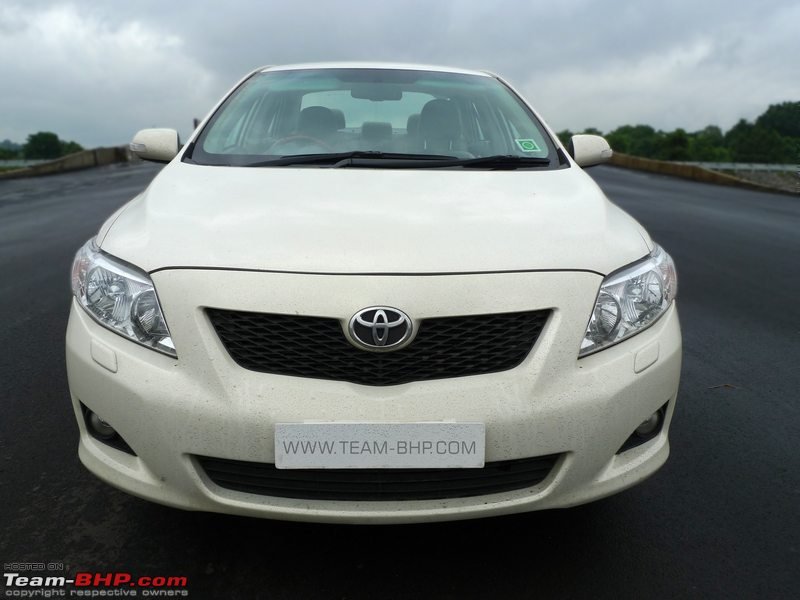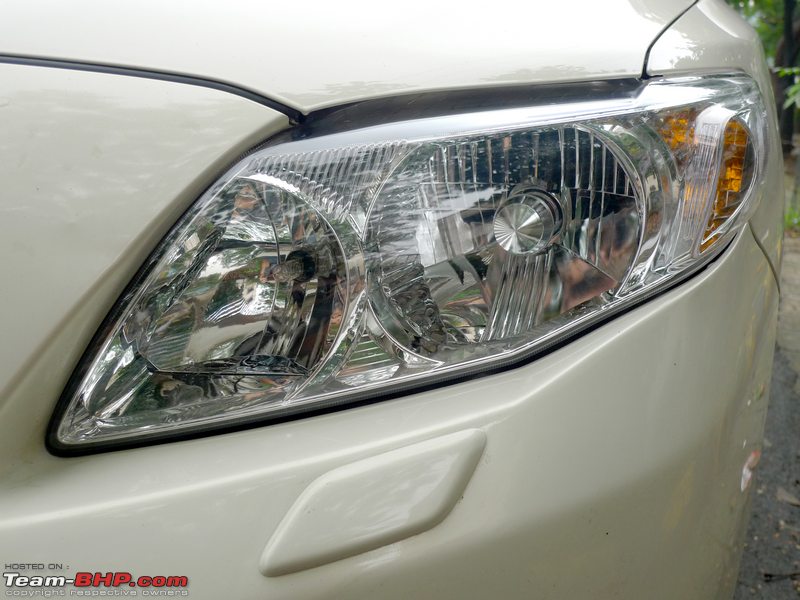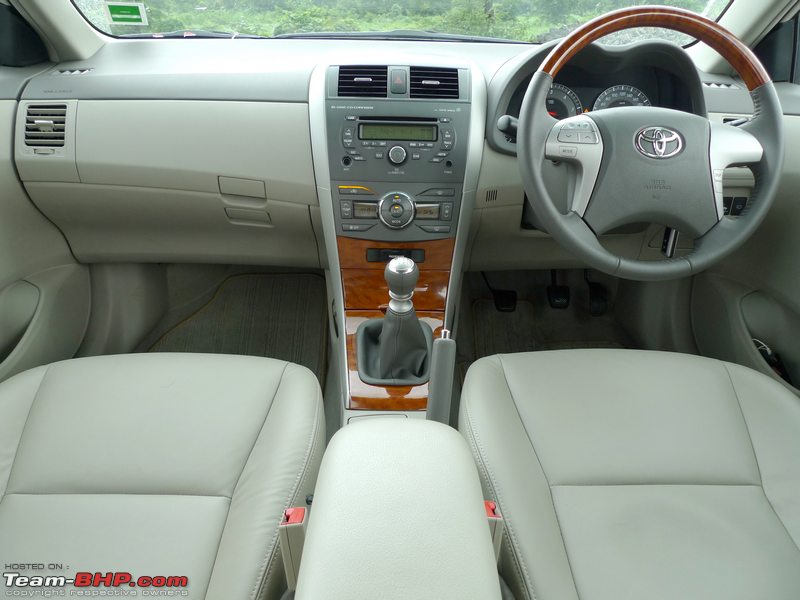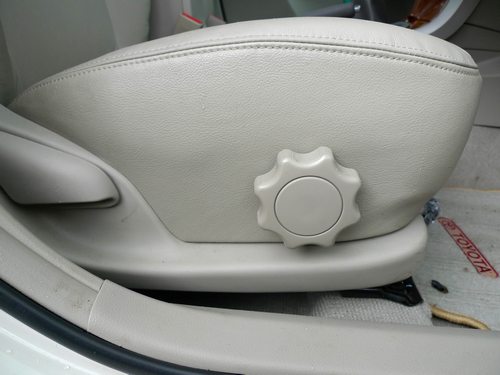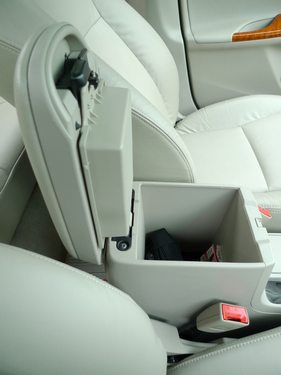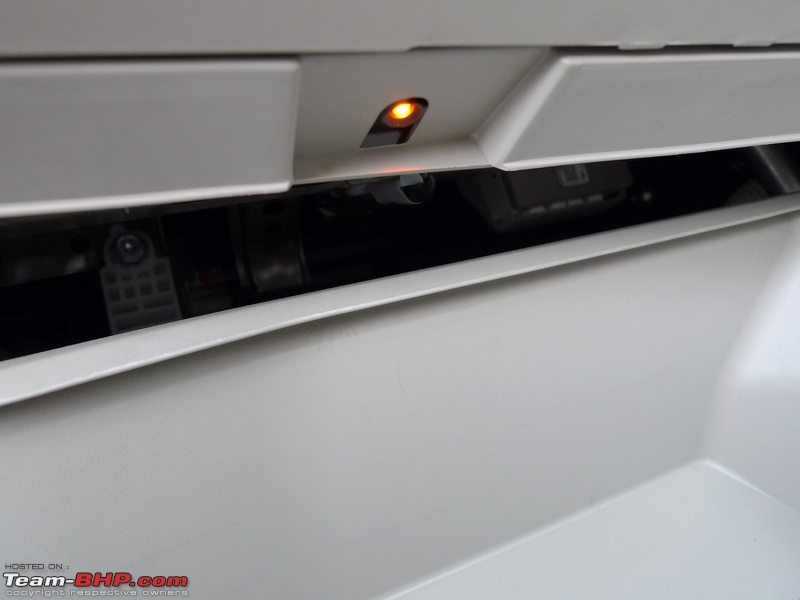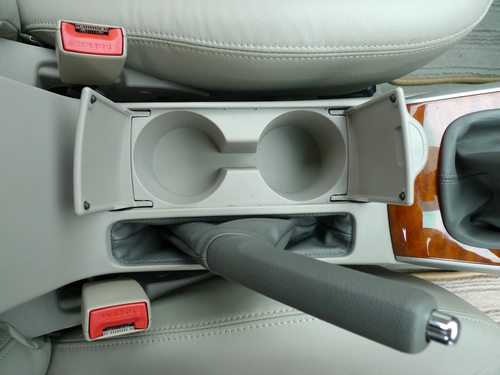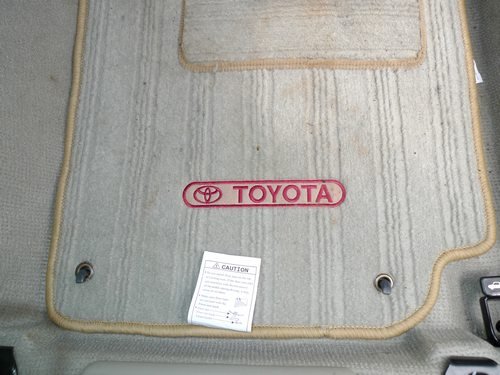
Toyota sure took the 1.3 MJD “national engine’s” success seriously. This is their own version, only in a full product segment above. Power for the Altis diesel comes from a 1.4L (1,364 cc) unit with a variable-geometry turbocharger and intercooler. Relative to its competitors, the Altis D-4D has 600 cc and 8 valves less. The Toyota common-rail unit is humbly rated at 87 BHP (@ 3,800 rpm) and max torque of 205 NM (@ 1,800 – 2,800 rpm). Good thing about the 1.4 D-4D is that you don’t need to slip the clutch or give it more revvs when taking off from 0 kph. A light tap on the accelerator is all that’s required. Once on the move though, things change. Where the Altis 1.8 petrol has excellent low-end throttle response, the 1.4 diesel is the diametric opposite. Despite a variable-nozzle turbo, there is substantial turbolag below 2,000 rpms. Even flooring the accelerator at 1,500 – 1,700 rpms (a range you will frequently access within the city) makes no difference to this Toyota. The engine is dead at low rpms, power delivery becomes acceptable at 1,800 rpm, but it’s only at 2,000 rpm that the Altis D-4D really gets moving. The turbolag can catch you out when you want “instant-go”; for instance, suddenly filling that gap ahead in traffic, or in an overtaking manouveur on the highway. Expect to make judicious use of the gearbox within the city. And frequently end up annoyed!
Engine refinement at idle is phenomenal. Except for a subtle murmur, there is absolutely no indication of the diesel under the hood. No vibrations on the gear lever or on the steering wheel either. The engine remains highly refined all through the revv range. In fact, sitting on the back seat (where most of its owners will be) while cruising, there is no engine sound at all. Toyota has added heavy insulation everywhere, including the bonnet, firewall, flooring and rear wheel arches! Under acceleration, there isn’t the push-in-the-back feeling that we’ve come to expect from modern diesels. Power delivery is subtle and linear (above 2,000 rpms). Expectedly, outright performance is below the segment averages. 0 – 100 takes 14.8 seconds, a dash that the Chevy Cruze dismisses in 9.8 seconds. The Altis D-4D is not a scorcher, not by a mile. Overtaking those fast moving Volvo buses also requires careful planning. You will
always have to shift down to overtake as the in-gear acceleration is poor. Again, it’s key to keep the engine between 2,000 – 4,000 rpms. If you act stubborn and don’t downshift (say at 60 kph in 5th), you’ll be waiting forever for the turbo to start spooling.
That said, work the gearbox and you can easily keep up with fast moving traffic on the highway. Understanding the power delivery characteristics and keeping the engine on boil, I made brisk performance on the ol’ Bombay-Nasik route. The motor has an immensely free-revving nature all the way to 4,900 rpms. Keep at it and she’ll go on to her 5,100 rpm redline. The car is an excellent highway cruiser in 6th gear. At 100 kph, the engine is lazily ticking over at a shade over 2,000 rpms. The Altis D-4D starts running out of breath at 130 - 140 kph. After all, there’s only so much that a 1.4 liter engine can do. It’s much better to instead “cruise” at a constant 100 – 120 kph in this car. Expectedly, the Altis trumps the fuel efficiency stakes in this segment. The light-footed amongst you will easily manage 13 – 14 kpl in the city and 18 kpl on the highway. The 6-speed manual gearbox is awesome to use. Its gates are narrow, and shifts are short & slick. Even the ratios are well chosen. With its humble power output, the Altis
needed a 6 ratio box to make the most of the 1.4 L engine. Toyota isn’t yet offering an automatic gearbox option on the Altis. This is surprising as 10+ lakh rupee customers are increasingly showing an inclination toward the convenience of slush boxes. The clutch isn’t super light, neither is it heavy. Right in the middle, but it’s got a long travel range which isn’t good for the city (where frequent gear changes are required). While the engine is refined for the most part (under 3,500 rpms), a surprisingly large amount of wind / road noise makes its way into the cabin at 100 kph.
Toyota has clearly tuned the Corolla’s suspension for comfort. It even takes the sharp edge off larger craters on our roads. The Altis remains cushiony and nicely damped over most road conditions. Low speed ride – especially within the city – is the best in the segment, while damping is top-class. Road irregularities are well cushioned, except for the really severe type. What’s better is that the suspension silently goes about its work. This is a step ahead of the previous generation Corolla that suffered from a noisy, unrefined suspension. The Altis was never meant to be a handler, neither is there any engine power for the enthusiasts amongst us. Let’s call the dynamics as safe and conservative. Grip levels are predictable for the most part, this side of 120 kph. Push a little harder into that ghat corner and understeer sets in easily. Body roll is also noticeable. Those fast sweeping curves are best taken with a cautious approach, else things get nervous. In the middle of a fast corner, wind forces can negatively affect her composure. The electric power steering is super-light at 0 kph and at low speeds. By light, I mean light even by hatchback standards. A breeze within the city, and just the kind of unit you want when parallel parking into that tight spot. On the flip side, the EPS is utterly lifeless on the expressway. It doesn’t weigh up as much as I’d have liked, and feels completely disconnected from the car. At speed, the steering feels akin to that of a video game! Feedback? What feedback, there isn’t any. The Altis is equipped with disc brakes on all 4 wheels, as well as ABS + EBD assistance. Stopping power is satisfactory, though the brake pedal feels wooden to use. The raised-for-India suspension (ground clearance = 175 mm) does a good job in dismissing off large speed breakers.
The Altis D-4D is an honest commuter sedan for those who want comfort, fuel-efficiency and reliability in a well-built package. The Altis also starts at the lowest price point in the segment. Is it for enthusiasts? Not by a mile. The Altis D-4D is the epitome of a point A to point B kind of car. This is a car that appeals completely to the head, yet not at all to the heart. Could Toyota have given the Altis a larger engine? You bet. Equipping the car with such a small-capacity powerplant is a gamble. Whether it works or not will only be decided by the market. My take : Enthusiasts can look elsewhere, but the typically Indian customer will make this car a success. It ticks all the check-boxes on his priority list. Justifiably so, Toyota diesels enjoy a sterling reputation in our market.
Look at all that extra space in the engine bay:

Generous helping of insulation. The bonnet is rather heavy to lift:
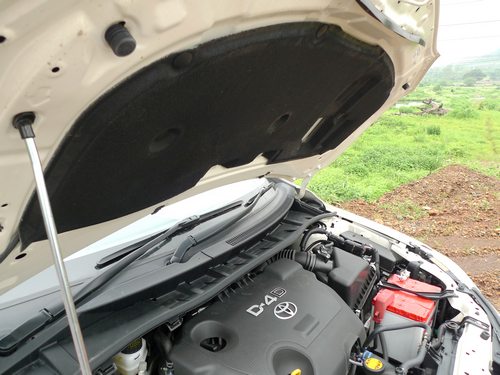

 (1)
Thanks
(1)
Thanks

 (4)
Thanks
(4)
Thanks

 (3)
Thanks
(3)
Thanks

 (2)
Thanks
(2)
Thanks

 (2)
Thanks
(2)
Thanks

 (6)
Thanks
(6)
Thanks

 (1)
Thanks
(1)
Thanks





